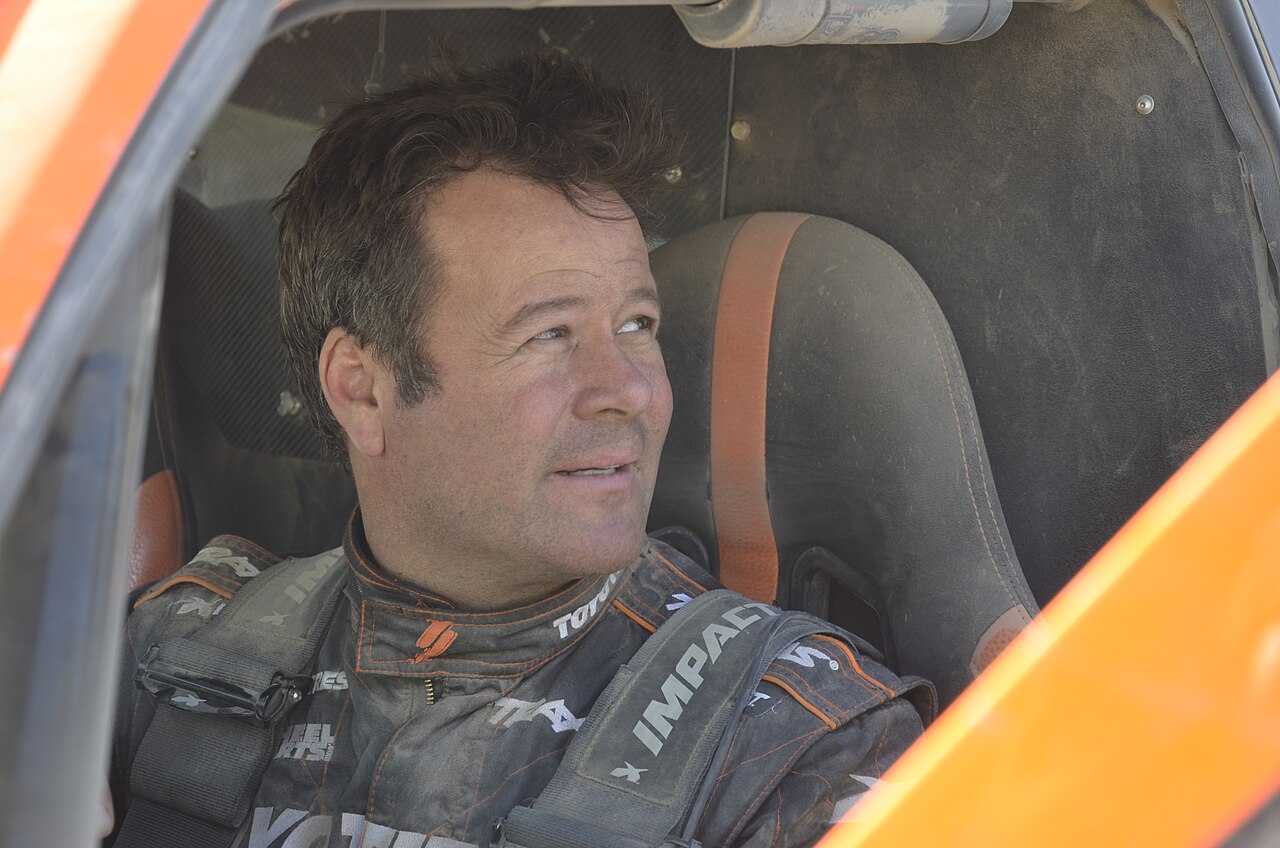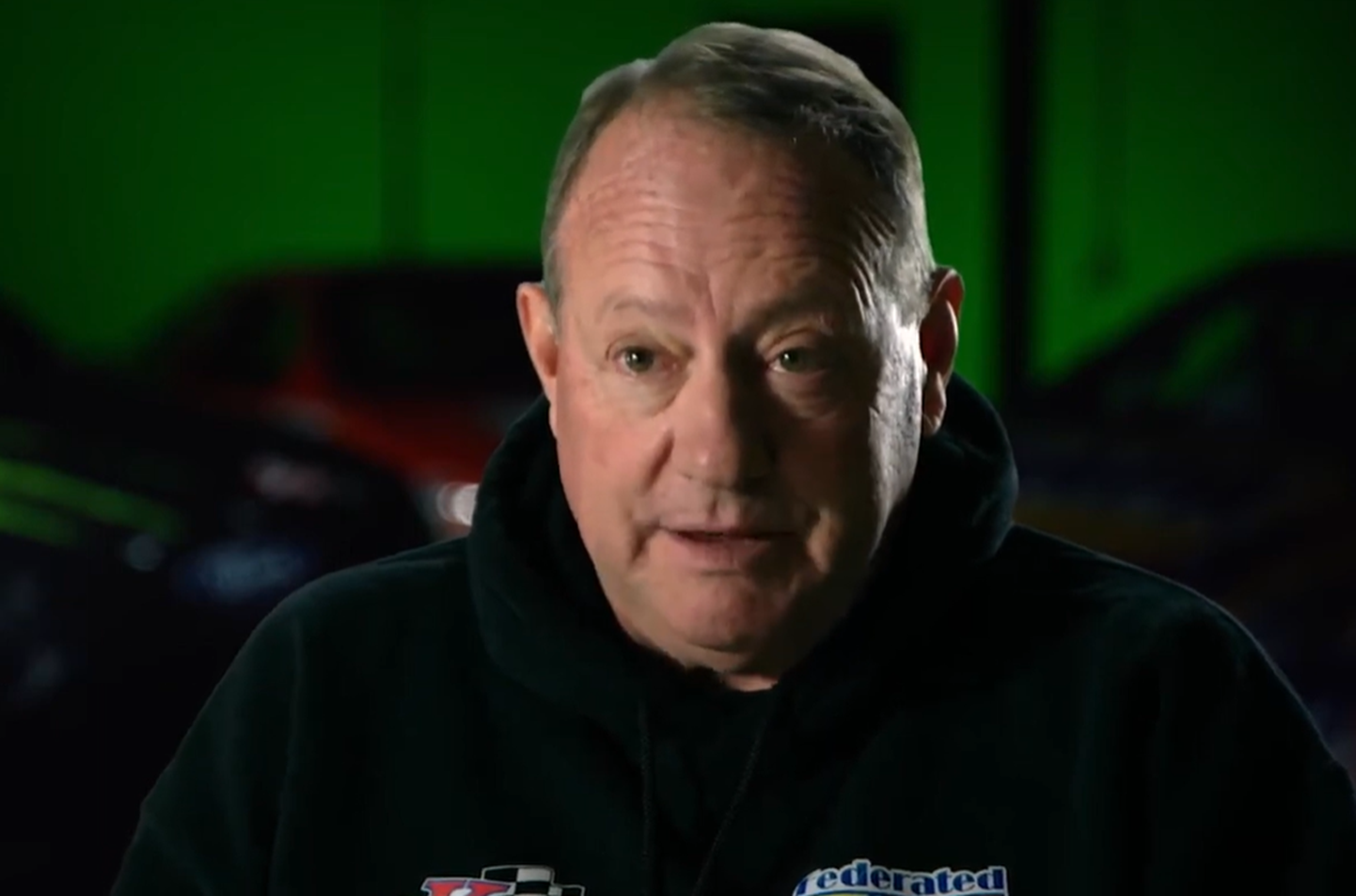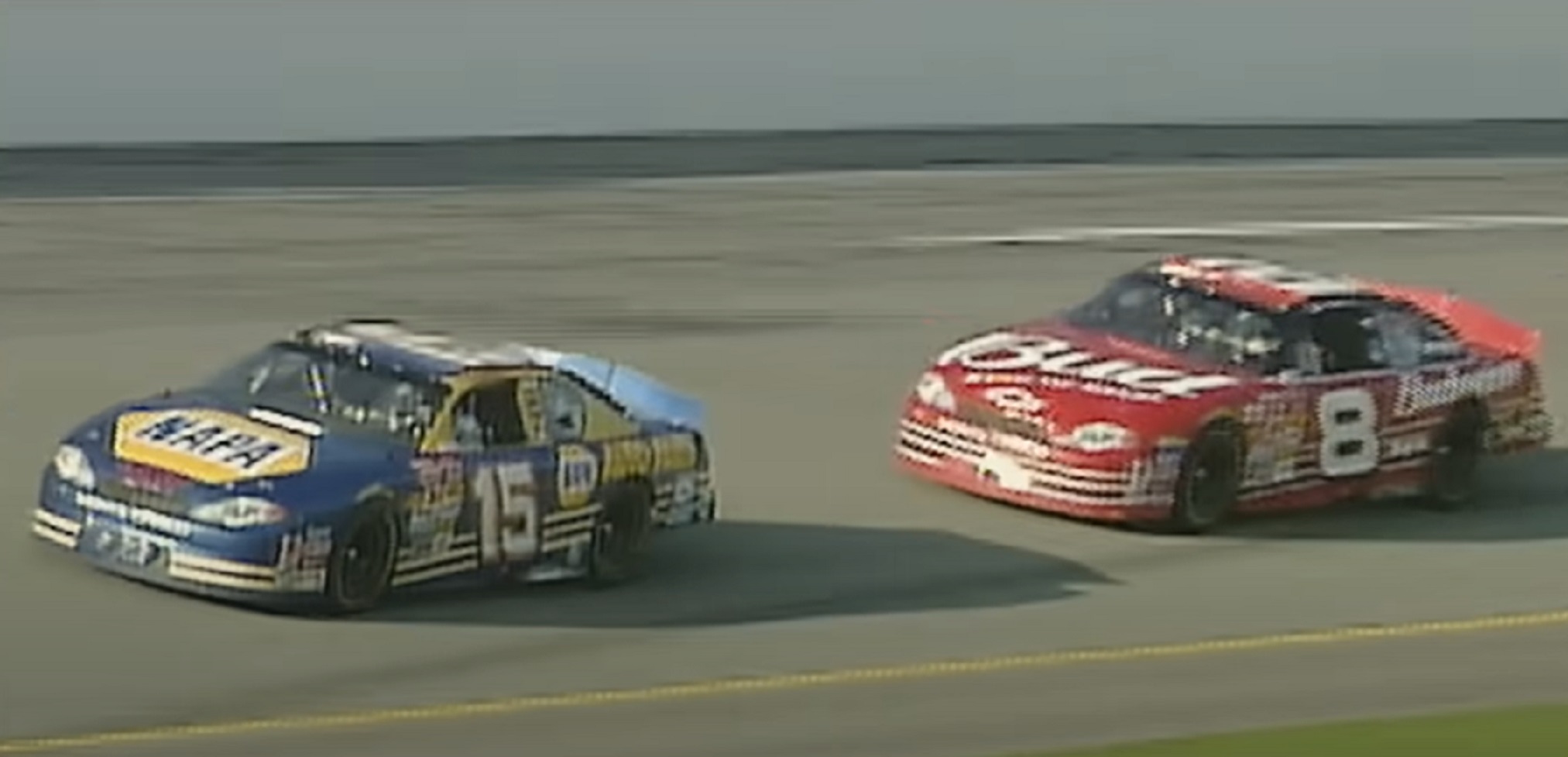Lost A Star
Dale Earnhardt was bigger than NASCAR. When he died, it took everyone by surprise—not just fans of the sport. But it was his autopsy that was the most shocking.

Who Was Dale Earnhardt?
Dale Earnhardt, or Dale Sr, was a professional stock car racer from North Carolina whose career spanned 25+ years.
 Darryl Moran, CC BY-SA 2.0, Wikimedia Commons
Darryl Moran, CC BY-SA 2.0, Wikimedia Commons
GOAT?
He came to be known as one of the greatest NASCAR racers in the history of the sport. But in 2001, he died in a catastrophic crash on the final lap of the Daytona 500.
 Darryl Moran, CC BY-SA 2.0, Wikimedia Commons
Darryl Moran, CC BY-SA 2.0, Wikimedia Commons
Records
Earnhardt’s combination of competitive and exhibition wins in his 26-year career totaled 100, making him one of only four NASCAR drivers to achieve this milestone.
 TSGT JACK BRADEN, USAF, Wikimedia Commons
TSGT JACK BRADEN, USAF, Wikimedia Commons
More Records
He is, to date, also the only NASCAR driver to win races consecutively in four different decades, from the 1970s to the 2000s.
 Taublieb Films, Blink Of An Eye (2019)
Taublieb Films, Blink Of An Eye (2019)
NASCAR
If you're not a fan already, stock car racing began as a type of race driving using production model cars, though it now uses cars specifically built for racing.
The most prominent stock racing organization is the National Association for Stock Car Auto Racing, or NASCAR. NASCAR is considered one of the top international motorsports organizations, and NASCAR stock car racing is one of the largest spectator sports in the United States.
 Mike Kalasnik, CC BY-SA 2.0, Wikimedia Commons
Mike Kalasnik, CC BY-SA 2.0, Wikimedia Commons
Family Legacy
Dale Earnhardt came to racing through his family. His father, Ralph, was also a stock car racer.
 Grindstone Media Group. Shutterstock
Grindstone Media Group. Shutterstock
His Kids
Earnhardt continued the family legacy, and his three children Kerry, Kelley, and Dale Jr are all involved in stock car racing. Both Kerry and Dale Jr are race-winning drivers in their own right.
 U.S. Navy photo by Scott A. Thornbloom, Wikimedia Commons
U.S. Navy photo by Scott A. Thornbloom, Wikimedia Commons
The Daytona 500
Dale Earnhardt Sr’s final race was the Daytona 500—a 500-mile race that takes place at Daytona Beach, Florida. It's one of the most prestigious races on the circuit, and tends to have the highest viewership and televised ratings of any stock car race in the world.
 Bruce Alan Bennett, Shutterstock
Bruce Alan Bennett, Shutterstock
8 Months Of Crashes
Looking back, Earnhardt's tragic end may have been preventable. Between May 2000 and Earnhardt’s fatal crash in February 2001, three other drivers had died of similar injuries.
Racers Adam Petty, Kenny Irwin Jr, and Tony Roper all suffered the same kinds of head trauma as Earnhardt, a basilar skull fracture, which were significant contributing factors to their deaths.
 Darryl Moran, CC BY-SA 2.0, Wikimedia Commons
Darryl Moran, CC BY-SA 2.0, Wikimedia Commons
A Couple Weeks Prior
Only a couple of weeks prior to that fateful race, Earnhardt and his team had competed in an endurance race in Daytona, placing fourth overall in the competition.
 Taublieb Films, Blink Of An Eye (2019)
Taublieb Films, Blink Of An Eye (2019)
February 18, 2001
Due to the high profile of the Daytona 500 specifically, it has been estimated that over 17 million viewers witnessed Earnhardt’s fatal crash.
 Ted Van Pelt, CC BY 2.0, Wikimedia Commons
Ted Van Pelt, CC BY 2.0, Wikimedia Commons
Pre-Race Criticism
Dale Earnhardt Sr had not appeared at fan events or media previews of the Daytona 500 that year. Given the number of fans he had, this had drawn criticism from some fellow racers.
 Taublieb Films, Blink Of An Eye (2019)
Taublieb Films, Blink Of An Eye (2019)
Before The Race
According to those around him, Earnhardt appeared confident of his chances in the race that morning. He was, after all, widely considered the frontrunner for the race to come, which only made the tragedy that much more poignant. That wasn't all, either.
 Darryl Moran, CC BY-SA 2.0, Wikimedia Commons
Darryl Moran, CC BY-SA 2.0, Wikimedia Commons
Speed And Safety
In 2000, NASCAR implemented some changes in how stock cars could be modified by each team, including the use of carburetor restrictor plates, and restrictions to the types of springs and shocks used on cars. This was partly for safety concerns.
Perhaps ironically, Earnhardt saw these new restrictions as taking away some of the excitement and uniqueness of stock car racing.
 Ted Van Pelt, CC BY 2.0, Wikimedia Commons
Ted Van Pelt, CC BY 2.0, Wikimedia Commons
The Race Begins
Earnhardt’s confidence seemed well-placed early in the race. He was now the literal frontrunner throughout the 500-mile course, and led the race for 17 breathless laps.
 Bruce Alan Bennett, Shutterstock
Bruce Alan Bennett, Shutterstock
Smooth Sailing Early On
For the first three-quarters of the race, there were few problems. It's true that a couple of caution flags were flown—but they were for two minor crashes on lap 49 and 157. This was nothing out of the ordinary for NASCAR. Yet.
 Taublieb Films, Blink Of An Eye (2019)
Taublieb Films, Blink Of An Eye (2019)
A Crash Before The Crash
With only 27 laps to go, on lap 173, a major crash occurred. It was a massive pile-up sparked by Robby Gordon turning into Ward Burton as he exited turn 2. This started a domino effect that eliminated 18 of the competitors in a very short time.
 Jared Smith, CC BY-SA 2.0, Wikimedia Commons
Jared Smith, CC BY-SA 2.0, Wikimedia Commons
A Crash Before The Crash
A few racers were able to avoid the pile-up, but the race was temporarily halted to allow clean-up of the crash site. Thankfully no one died in this crash. At the time, Earnhardt was driving in seventh place. His response still sends chills up people's spines.
 Emanuel Agustin Lorenzoni Macchi, CC BY-SA 2.0, Wikimedia Commons
Emanuel Agustin Lorenzoni Macchi, CC BY-SA 2.0, Wikimedia Commons
A Fateful Remark
While driving a stock car race, drivers wear headsets that allow them to be in contact with their crews. This way, a driver can let the crew know of any problems with the vehicle and the crew can advise the driver of anything to be aware of on the track.
At one point, Earnhardt is said to have remarked to his crew via his headset, “...if they don’t do something about these cars, it’s gonna end up killing somebody.”
 Taublieb Films, Blink Of An Eye (2019)
Taublieb Films, Blink Of An Eye (2019)
Final Communication
During this caution, Earnhardt also had the last conversation he would have with his crew over the headset...with teammate Andy Pilgrim.
Earnhardt: So, you got any advice for me here coming up?
Pilgrim: No, man, I haven't got any advice for you. Just keep doing what you're doing.
Earnhardt: Okay, just wondering.
Pilgrim: Cheers; talk to you later.
Heading Into The Home Stretch
Heading into the final 20 laps of the race, Earnhardt’s son, Dale Jr, and Michael Waltrip were the frontrunners. Waltrip was first, while Dale Jr was running in second. Both were members of Dale Sr’s team.
A Good Teammate
As a good member of the team, Dale Sr worked from behind to keep anyone else from getting in front and jeopardizing his son or Waltrip's chances of winning the race. Throughout, Earnhardt could be heard cheering them on over the headset.
 Taublieb Films, Blink Of An Eye (2019)
Taublieb Films, Blink Of An Eye (2019)
The Final Turn
Earnhardt’s accident occurred on turn 4 of the 200th lap of the race, which was the final turn of the final lap of the circuit. Earnhardt was just seconds away from the finish line when everything changed.
 Taublieb Films, Blink of an Eye (2019)
Taublieb Films, Blink of an Eye (2019)
The Crash
At the incredible speeds the cars were traveling, it took only light contact with Sterling Marlin’s car to send Dale Sr slightly out of control. As he tried to correct his course, things took a turn for the worse.
 Taublieb Films, Blink Of An Eye (2019)
Taublieb Films, Blink Of An Eye (2019)
The Crash
Earnhardt crossed in front of the car driven by Ken Schrader, who was one of the other drivers who had managed to avoid the lap 173 pile-up as Earnhardt had.
Earnhardt then hit a nearby retaining wall at an estimated speed of between 155 and 160 mph—slamming into it with sufficient force to break the right rear wheel assembly completely off from the car.
 Taublieb Films, Blink of an Eye (2019)
Taublieb Films, Blink of an Eye (2019)
The Crash
The force of the crash also knocked loose the hood of the car, causing it to slam against the windshield numerous times.
The Crash
At this point, both Schader and Earnhardt's cars came to a stop at the turn 4 infield. Schrader was able to pull himself from his car and he rushed to assist Earnhardt. Unfortunately, there was little to be done for the acclaimed racer.
 Bruce Alan Bennett, Shutterstock
Bruce Alan Bennett, Shutterstock
First On The Scene
When Schrader arrived at Earnhardt’s car to help him out, he immediately knew something was wrong. He called for the paramedics, rather than trying to get Earnhardt out of the car himself, knowing that things were very serious.
 Taublieb Films, Blink of an Eye (2019)
Taublieb Films, Blink of an Eye (2019)
10 Years Later
10 years later, Schrader admitted in an interview that he was pretty sure Earnhardt was dead right from the moment he saw the seriousness of the crash. "Here's the deal. When I went up to the car ... I knew. I knew he was dead, yeah. ... I didn't want to be the one who said 'Dale is dead.'"
 Taublieb Films, Blink Of An Eye (2019)
Taublieb Films, Blink Of An Eye (2019)
The Winners
While the crash was happening, Dale Earnhardt Jr and Waltrip crossed the finish line, and the checkered flag was flown. At the time, neither knew what had happened, only that there had been a crash behind them. They had no idea Dale Sr was even involved, let alone killed.
 Taublieb Films, Blink of an Eye (2019)
Taublieb Films, Blink of an Eye (2019)
Rushed To Hospital
NASCAR provides an on-site hospital and requires drivers to report there in cases of injury. When the injury is severe enough, however, a driver can be sent directly to the closest trauma center. Earnhardt’s injuries were considered extremely severe, and he was taken to Halifax Medical Center by ambulance.
 Taublieb Films, Blink of an Eye (2019)
Taublieb Films, Blink of an Eye (2019)
5:16pm
Unfortunately, as Schrader would later admit, it was already too late. At 5:16 pm, upon arriving at the hospital, Dale Earnhardt Sr was pronounced dead. But what exactly had killed him?
 Taublieb Films, Blink of an Eye (2019)
Taublieb Films, Blink of an Eye (2019)
Cause Of Death
The official cause of death was listed as blunt force trauma to Earnhardt's head—among other injuries sustained in the crash. Earnhardt also suffered a basilar skull fracture during the impact with the retaining wall.
 Taublieb Films, Blink Of An Eye (2019)
Taublieb Films, Blink Of An Eye (2019)
NASCAR Responds
Just under two hours after the accident, the president of NASCAR, Mike Helton, released a statement on Earnhardt’s death. NASCAR’s subsequent investigation revealed the specifics of the accident, including the angle at which the car hit the retaining wall and the estimated speeds of the cars involved in the tragic accident.
 Taublieb Films, Blink of an Eye (2019)
Taublieb Films, Blink of an Eye (2019)
“Black Sunday”
The death of such an acclaimed, beloved, and long-running figure in NASCAR racing was extremely emotional for fans of both the racer and the sport. The day of the accident was called “Black Sunday” by Sporting News.
Public Service
A public service honoring Earnhardt was held four days later at the Calvary Church in Charlotte, North Carolina, allowing fans to come out and honor their sports hero. Sadly, they also had a lot of anger in their hearts.
 Nascar Productions, Dale (2007)
Nascar Productions, Dale (2007)
Threats To Sterling Marlin
Looking for somewhere to place blame, many fans lashed out at Sterling Marlin, the driver who had first hit Dale Earnhardt at that fateful corner. Some began sending him hate mail and even death threats. Eventually, Dale Sr's family had to step in.
 Ed McDonald, CC BY 2.0, Wikimedia Commons
Ed McDonald, CC BY 2.0, Wikimedia Commons
Jr Says Stop
In the wake of all this outpouring of anger and hurt, Earnhardt’s son, Dale Jr., absolved Marlin of any wrongdoing and asked that everyone who loved his father to please stop assigning blame. Nonetheless, Marlin felt he had to speak up too.
 Sarah Stierch, CC BY 4.0, Wikimedia Commons
Sarah Stierch, CC BY 4.0, Wikimedia Commons
Marlin Statement
On February 20th, Marlin issued this statement in regards to the incident:
"I definitely didn't do anything intentional. We were just racing our guts out for the last lap of the Daytona 500. Everybody was going for it. Dale's car got caught in the middle [three-wide with Ken Schrader]. I was as low as I could go. Whether Rusty Wallace got him loose and down into me, I don't know. You have to talk to Rusty Wallace. I watched the tape one time and that is all I want to see it."
But there were others to blame.
 Bruce Alan Bennett, Shutterstock
Bruce Alan Bennett, Shutterstock
Threats To Bill Simpson
Earnhardt’s car has been outfitted with seatbelts from a company called Simpson Performance Products. Founder Bill Simpson was a former driver who had started the company to help make the sport safer. Like Marlin, Simpson was subject to hate mail and death threats from fans who blamed him and his products for the death of the racing legend.
 Taublieb Films, Blink of an Eye (2019)
Taublieb Films, Blink of an Eye (2019)
Retired Colors
As a result of the crash, and of Earnhardt’s legacy and popularity, Richard Childress, the owner of the team for which Earnhardt drove, retired the colors of Dale Sr’s car.
Earnhardt drove a black car, and subsequent races either used an inverted, mostly-white color scheme, or one with red and blue stripes.
 Michael Barera, CC BY-SA 4.0, Wikimedia Commons
Michael Barera, CC BY-SA 4.0, Wikimedia Commons
Retiring No. 3
Also in honor of Earnhardt, the team stopped racing with the number 3 adorning their cars, taking instead the number 29.
For just over a decade following the crash, a small “3” decal was also affixed to the cars, near the number 29, in honor of Earnhardt. Then in 2013, the team began racing under the number 3 again.
The Investigation
In the wake of Earnhardt’s crash, there were a number of investigations into how the crash had happened—and why it had been fatal.
 William M. Plate Jr., USAF CIV. Wikimedia Commons
William M. Plate Jr., USAF CIV. Wikimedia Commons
Seatbelt Rumors
Rumors circulated that parts of the seatbelt harness had broken, prompting those threats toward Bill Simpson that we mentioned. Many speculated that had this not been the case, Earnhardt would have survived the crash.
Causes Of Death
Given the high-profile nature of Earnhardt’s death, many different experts were brought in to verify the autopsy findings and offer some explanation. After the official autopsy, an independent assessment was carried out by Dr. Barry Myers and doctors at the University of Miami and Wayne State University.
Simpson Exonerated
All the involved doctors concluded that it was not a seat belt problem that had caused the death, but a different problem entirely: There was a lack of head and neck restraints.
Simpson Leaves
Simpson Performance Products owner Bill Simpson was relieved by this news, but still left his position at the company, citing “too much” stress. The company also asked NASCAR to release an official statement asserting that the death had not been the fault of the company or its products.
 Doctorindy, CC BY-SA 4.0, Wikimedia Commons
Doctorindy, CC BY-SA 4.0, Wikimedia Commons
The Autopsy Controversy
Following Earnhardt’s death, a legal battle played out in Florida as numerous news outlets sought access to both the autopsy report and autopsy photographs. Earnhardt’s widow Teresa requested an injunction disallowing the sharing of what are usually public documents.
Although potentially unconstitutional, the judge in the case ruled in favor of Teresa Earnhardt.
 Darryl Moran, CC BY-SA 2.0, Wikimedia Commons
Darryl Moran, CC BY-SA 2.0, Wikimedia Commons
Safety matters
NASCAR’s thorough investigation into the causes of the crash and of Earnhardt’s death prompted reconsideration of safety measures in the sport. While NASCAR president Helton noted “We are still not going to react for the sake of reacting”, the circumstances of Earnhardt’s death did have lasting effects on the safeguards of the sport.
 Taublieb Films, Blink of an Eye (2019)
Taublieb Films, Blink of an Eye (2019)
Better Restraints
The safety belt controversy following Earnhardt’s death prompted many racers to adopt a 6-point safety harness, as opposed to the usual 5-point harness installed in cars.
 Zach Catanzareti, CC BY-SA 2.0, Wikimedia Commons
Zach Catanzareti, CC BY-SA 2.0, Wikimedia Commons
Better Restraints
Further, the HANS (Head and Neck Support) device was adopted as a mandate by NASCAR in October 2001. Given that this is truly what made Earnhardt's crash fatal, it's good that this was mandated.
Better Barriers
Another consideration in Earnhardt’s fatal crash was the impact of his car against the track’s retaining wall. Between 2002 and 2005, most oval stock car racing tracks installed SAFER Barrier walls (Steel And Foam Energy Reduction). These SAFER barriers absorb kinetic force during impacts, hopefully reducing the severity of injuries sustained by drivers.
But the tragedy wasn't over.
 Raniel Diaz, CC BY 2.0, Wikimedia Commons
Raniel Diaz, CC BY 2.0, Wikimedia Commons
An October Scare
10 months after Earnhardt’s death, and during the time many safety measures were being debated in the stock car world, racer Blaise Alexander was killed during an event at the Charlotte Motor Speedway.
 Dough4872, CC BY-SA 4.0, Wikimedia Commons
Dough4872, CC BY-SA 4.0, Wikimedia Commons
An October Scare
Chillingly, the other racer involved in this fatal crash was Earnhardt’s eldest child, driver Kerry Earnhardt. Kerry's car flipped onto its roof—but thankfully he was not injured in the accident.
 Grindstone Media Group, Shutterstock
Grindstone Media Group, Shutterstock
The Car of Tomorrow
Another result of safety concerns about Earnhardt’s crash was the development of improved chassis for stock car racing. The Car of Tomorrow design was used in competitions following Earnhardt’s death. It was replaced by the even-more safety conscious Gen 6 car as of 2013.
 Chris Short, CC BY-SA 2.0, Wikimedia Commons
Chris Short, CC BY-SA 2.0, Wikimedia Commons
TLC
Just a year after Earnhardt’s death, a similar controversy erupted around the death of TLC singer Lisa Lopes and the release of her autopsy documents. The blocking of releasing these documents was not successful, and Lopes’ autopsy photos began appearing on the Internet. If it weren't for Teresa, this could have been Dale.
Blink of an Eye
In 2019, a documentary titled Blink of an Eye was produced about the career of Michael Waltrip, the winner of that fateful race, which included footage and commentary on Earnhardt’s fatal 2001 crash.


















